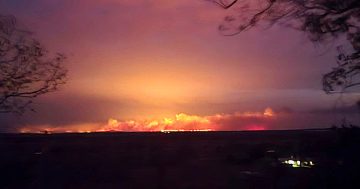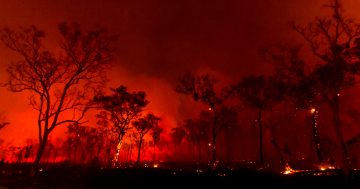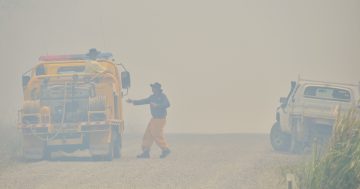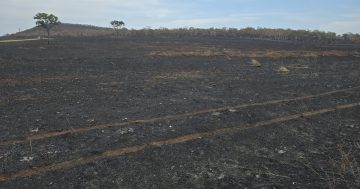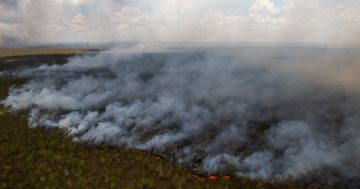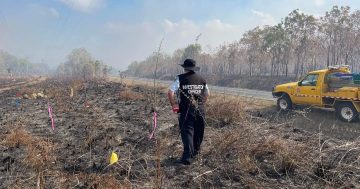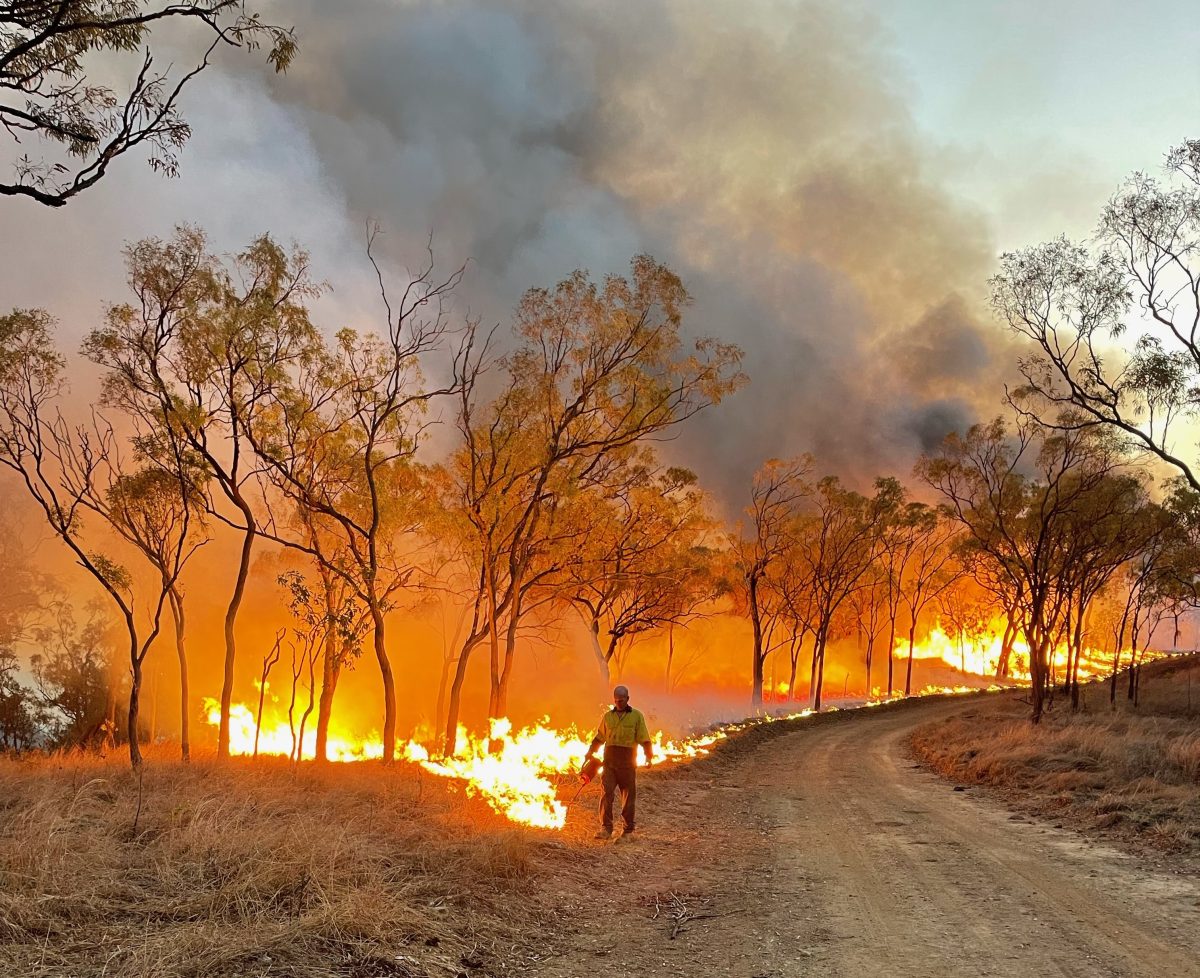
A backburning exercise was underway at Mt Gibson Station, but now Lakeland residents are desperately trying to stop a wildfire from destroying their properties. Photo: Steve Ahlers.
A fire lit by Queensland Parks and Wildlife Service just days before an unprecedented Cape-wide total fire ban has escaped and burnt out hundreds of thousands of hectares of private property near Lakeland.
On Thursday (26 October), exhausted residents were facing another night of backburning with the huge blaze holding steady at containment lines on Mount Gibson Station.
Despite initially denying any responsibility for the fires when questioned by Cape York Weekly on Wednesday (25 October), and laying the blame on arsonists, QPWS admitted on Thursday that a planned burn had escaped.
“On 10 October, QPWS began a planned burn near Piccaninny Creek in the Mount Windsor National Park,” a QPWS spokesperson said.
“The planned burn moved beyond containment lines and has impacted on neighbouring properties and bushland.”
The impact was definitely felt in Lakeland, with The Brothers station owner Steve Ahlers and other residents left fighting a 40 km firefront on their own.
“Lakeland Downs has been half burnt out, my sister has lost half of everything and if we can’t pull it up, it’ll burn out Laura,” Mr Ahlers said.
“I think it’s burnt 400,000 hectares so far. It’s come right through the hills from Mount Windsor through the back of Maitland and cleaned out a big area.
“My poor sister and her husband are in their 70s. Everyone is there fighting it. We were out until 2 am and we’ve been out the last few nights.”
Another Lakeland resident, who did not want to be named, said one QPWS unit had been assisting in the firefight, but it wasn’t until several days later that more units arrived to help.
With fires burning across the Cape and ravaging the Darling Downs and other areas of Queensland, resources are stretched thin, but Queensland Fire and Emergency Services still scrambled crews to assist Lakeland.
A QFES spokesperson said the firies weren’t notified of the out of control burn until five days later, on Sunday (15 October).
“QFES actively engaged with QPWS and landholders in response to this fire, with strike teams supported by aerial assets, including water bombing and intelligence-gathering aircraft,” they said.
Mr Ahlers said somebody in QPWS needed to be held accountable for the disaster.
“When the rest of the country is on high alert, they seem to be able to invent a fire permit in-house and feel that they’re not responsible for their actions,” he said.
“Somebody needs to be held accountable.”
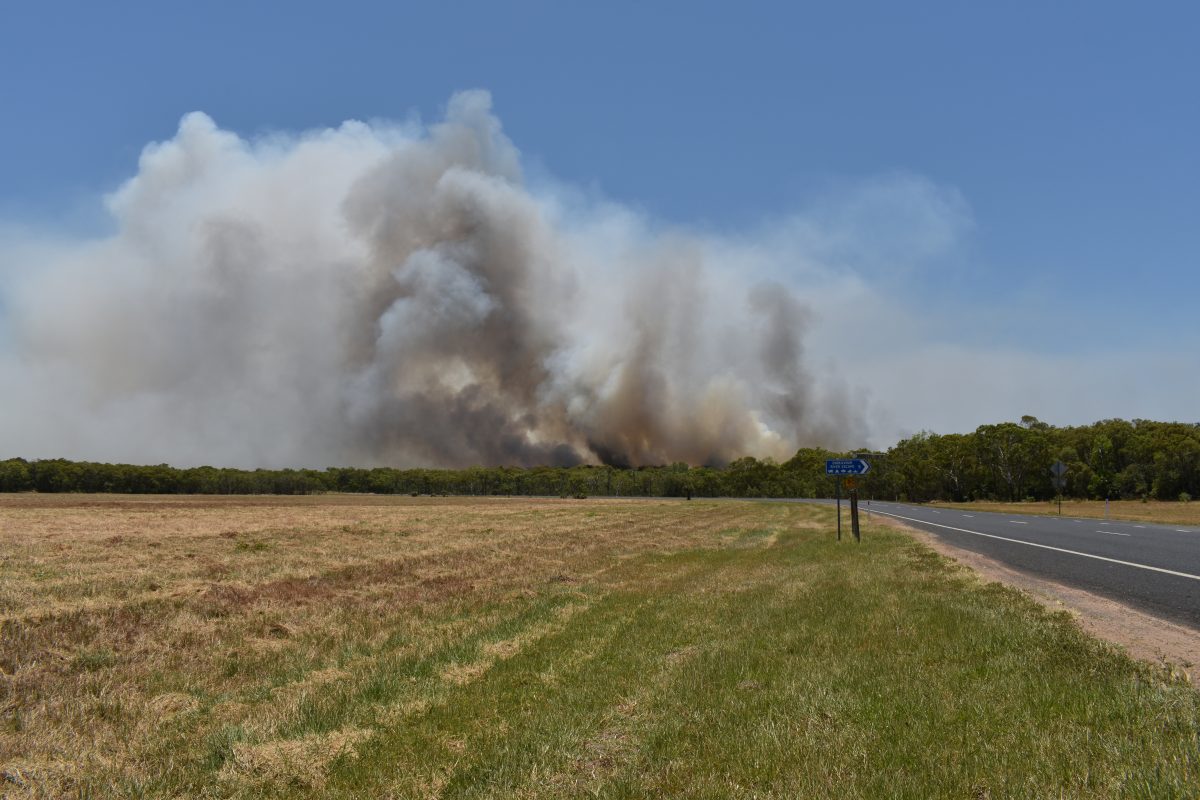
Thick smoke from the Cameron Creek Road fire, just past Cooktown’s airport, was visible for kilometres.
The blaze comes on the back of repeated arson in the Cape, with fires ravaging Piccaninny Plains Wildlife Reserve, threatening the township of Aurukun and burning unchecked across swathes of cattle country and bush last week, as well as a blaze near Cooktown which threatened homes on 22 October.
A total fire ban has been in place for the local government areas of Aurukun, Cook, Douglas, Hope Vale, Kowanyama, Lockhart River, Mapoon, Napranum, Northern Peninsula Area, Pormpuraaw, Torres, Weipa, Wujal Wujal, Cairns, Yarrabah, Cassowary Coast, Mareeba, Tablelands, Croydon and Etheridge since 19 October.


